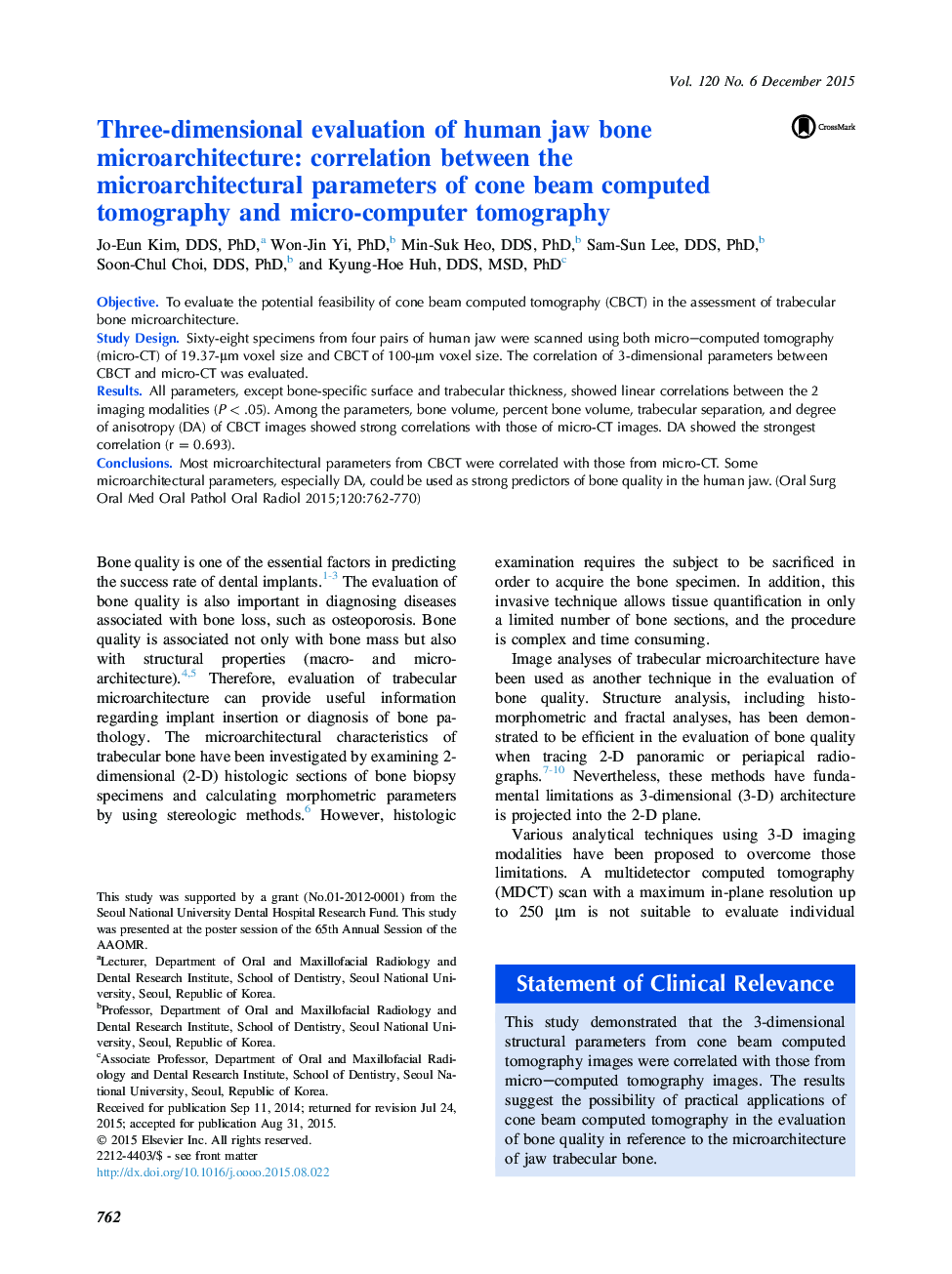| Article ID | Journal | Published Year | Pages | File Type |
|---|---|---|---|---|
| 3166474 | Oral Surgery, Oral Medicine, Oral Pathology and Oral Radiology | 2015 | 9 Pages |
ObjectiveTo evaluate the potential feasibility of cone beam computed tomography (CBCT) in the assessment of trabecular bone microarchitecture.Study DesignSixty-eight specimens from four pairs of human jaw were scanned using both micro–computed tomography (micro-CT) of 19.37-μm voxel size and CBCT of 100-μm voxel size. The correlation of 3-dimensional parameters between CBCT and micro-CT was evaluated.ResultsAll parameters, except bone-specific surface and trabecular thickness, showed linear correlations between the 2 imaging modalities (P < .05). Among the parameters, bone volume, percent bone volume, trabecular separation, and degree of anisotropy (DA) of CBCT images showed strong correlations with those of micro-CT images. DA showed the strongest correlation (r = 0.693).ConclusionsMost microarchitectural parameters from CBCT were correlated with those from micro-CT. Some microarchitectural parameters, especially DA, could be used as strong predictors of bone quality in the human jaw.
